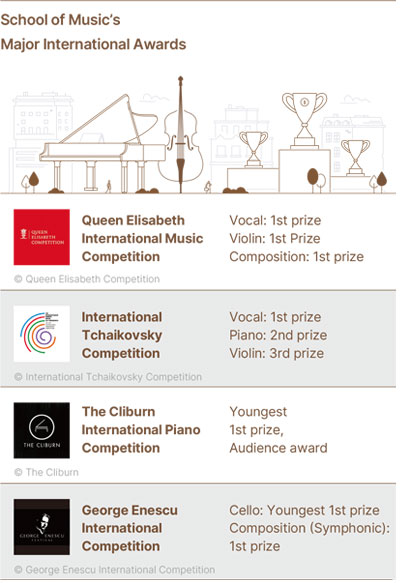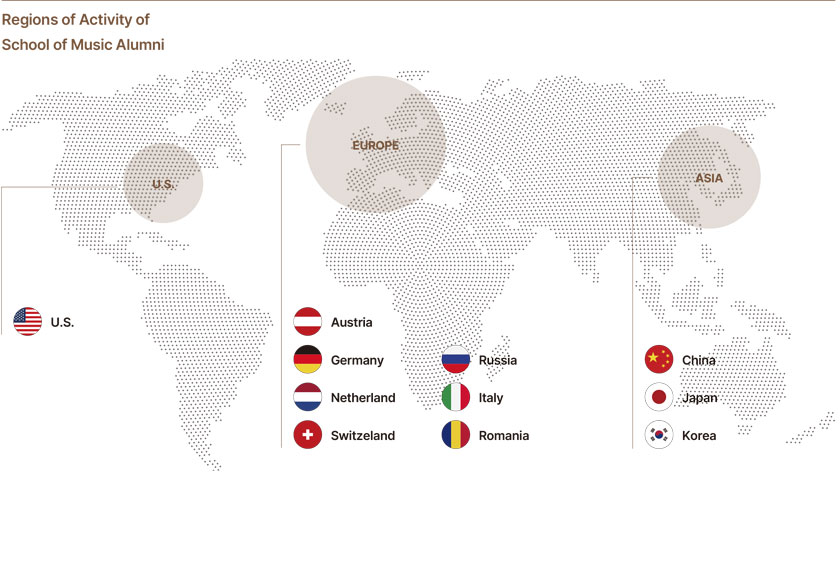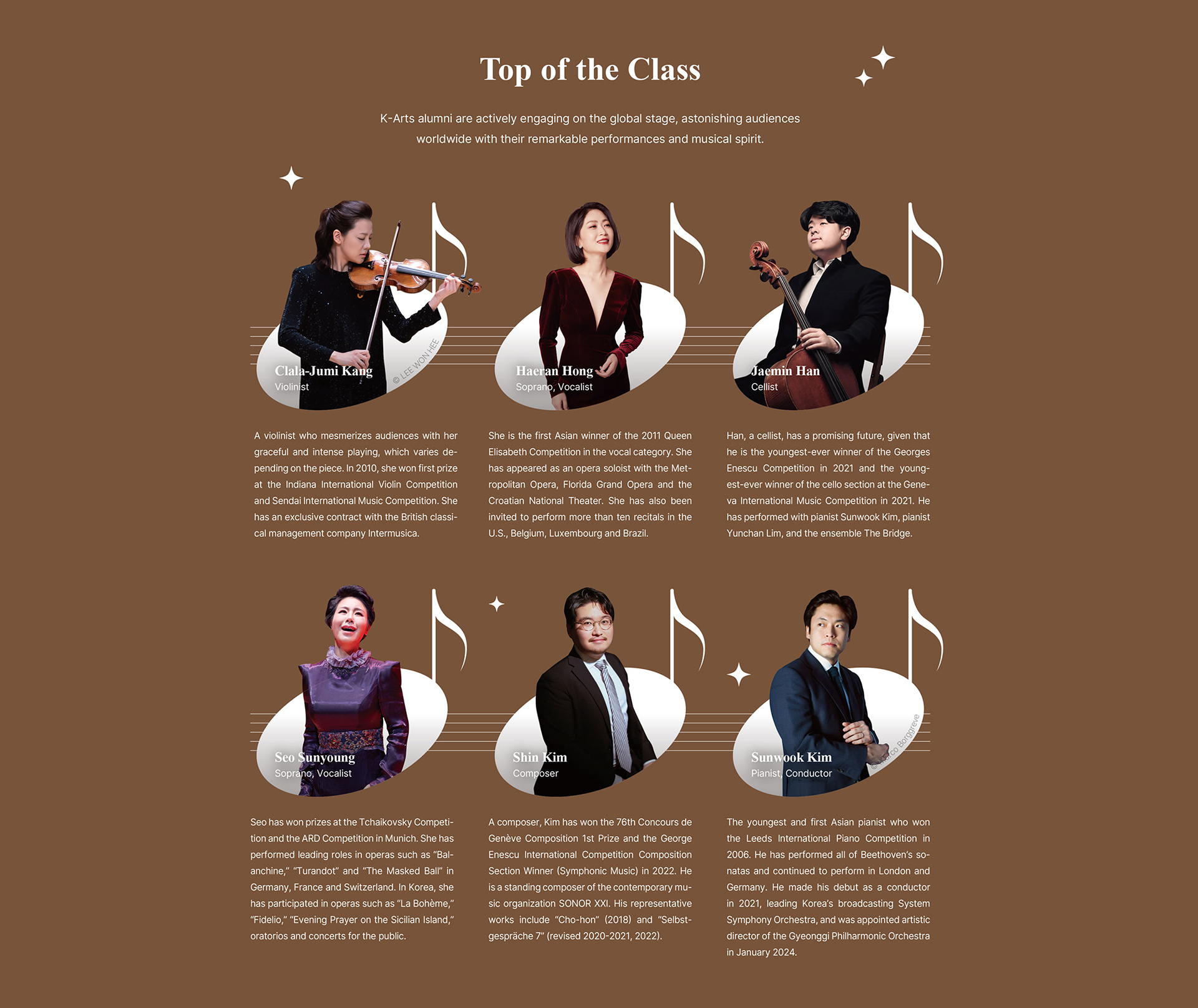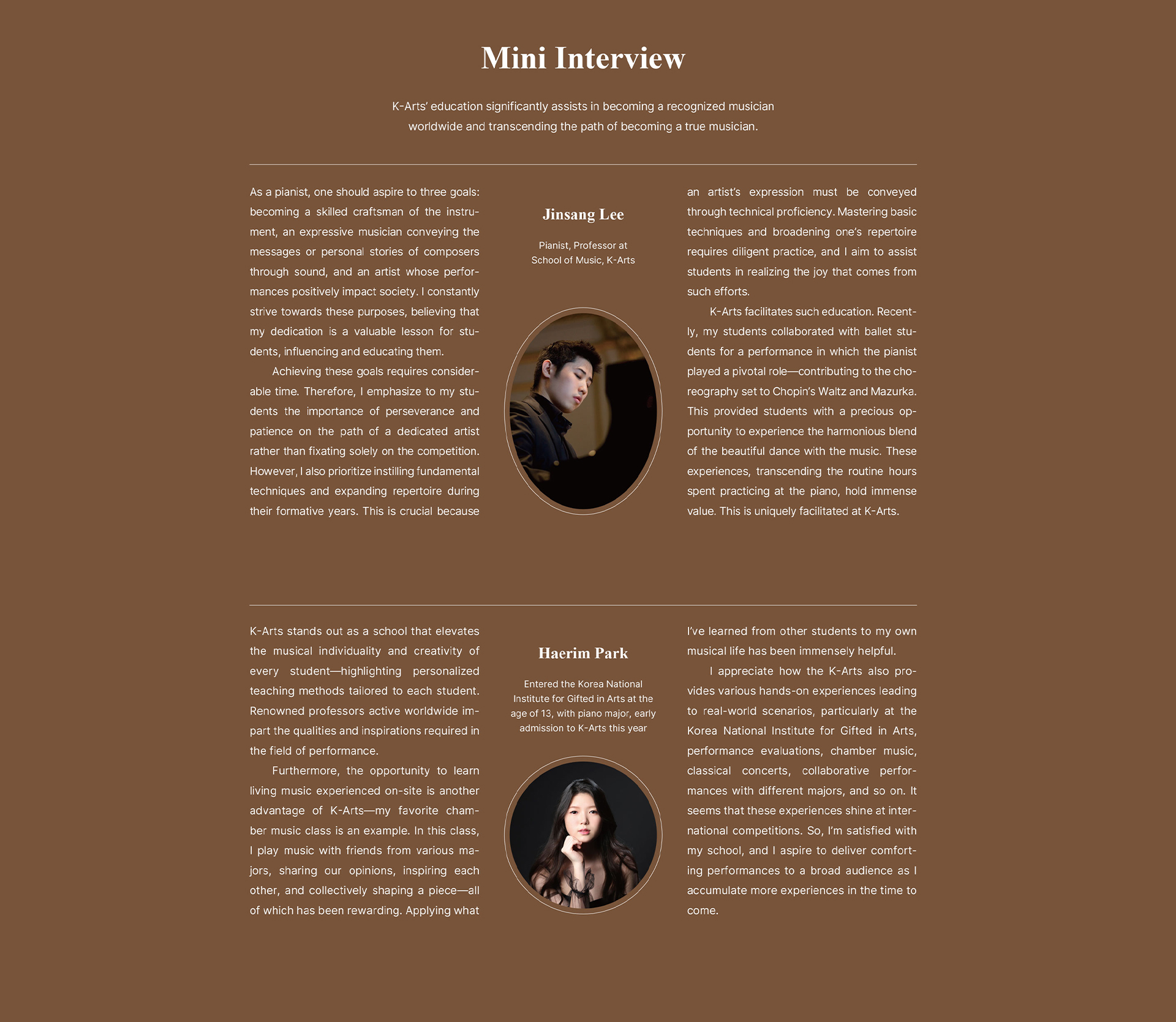Pianist Seong-Jin Cho, a winner of the 2015 Chopin Competition; violinist Inmo Yang, a winner of the 2022 Sibelius Competition; cellist Hayoung Choi, a winner of the 2022 Queen Elisabeth Competition; and pianist Yunchan Lim, a winner of the 2022 Van Cliburn Competition, have all gained fame through international competitions, and they are the stars leading the “K-classic” wave. In recent years, Koreans have been winning prizes at all kinds of international classical competitions. For example, at the prestigious Queen Elisabeth Competition in 2023, 18 of the 64 finalists in the vocal category were Koreans, representing 28% of the finalists. How does a country with no reputation in the past make such amazing achievements? The answer lies in Korea National University of Arts, the crown jewel of the Korea’s education system that produces young classical music stars.

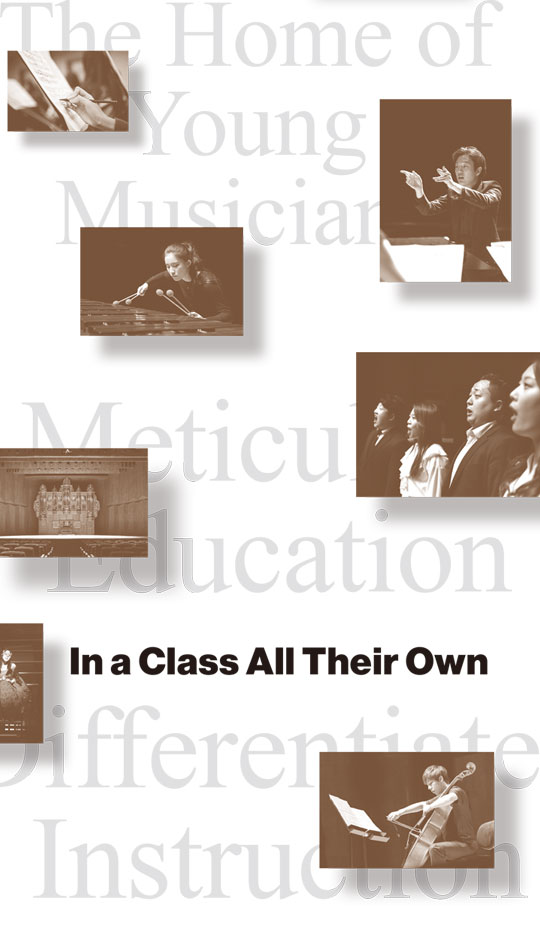
Writer.
Kim Da Un
Photos courtesy of.
Korea National University of Arts
Personalized Education
The School of Music at Korea National University of Arts (K-Arts) was founded in 1993 to train world-class musicians exclusively in Korea. The School of Music has a vocal music department, instrumental music department, composition department, conducting department and musicology department. Each department selects a small number of highly talented students for intensive classes.

Unlike other general education institutions of Korea, K-Arts School of Music has an apprenticeship system that focuses on the details of music instruction. Of course, K-Arts School of Music also supports individualized practical lessons, as well as workshops for each major where students can interact with multiple professors. Throughout the process, personalized one-on-one instruction helps students find their own musical voice.
The curriculum reflects the school’s “student-centered” approach to education. For example, students do not go through a liberal arts program but enter directly into a specialized program from the first year. They take a single class called Western Music Grammar, which combines introductory theory courses. Throughout this course, students learn the basic theoretical framework of Western music, such as counterpoint, harmony and analysis, all based on their major, abilities and interests. Depending on a student’s career path, classes are taught through appropriate systems and methods, either individually or in groups.

Throughout practical instruction, the school enables students to develop the practical skills and creativity they need as an artist. This can be accomplished by regular performances in the student orchestra, string ensembles, wind orchestra, chorus and opera. In addition, students are allowed to perform more than 140 concerts each year in a variety of venues. They also have access to over 100 private practice rooms where they can dedicate themselves to practicing.
As this shows, the school is the perfect place for students to develop their own identities and sense of place as musicians.

